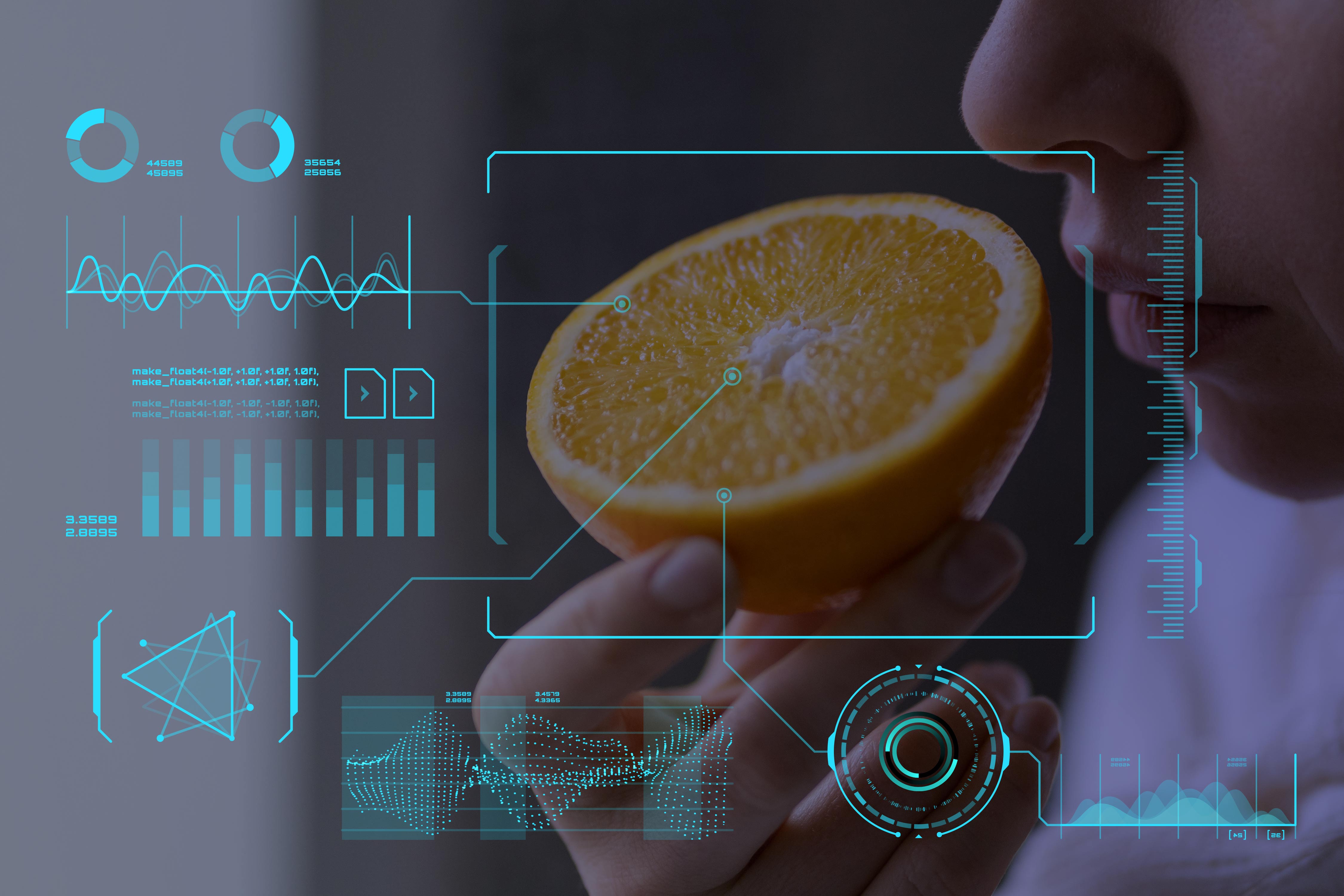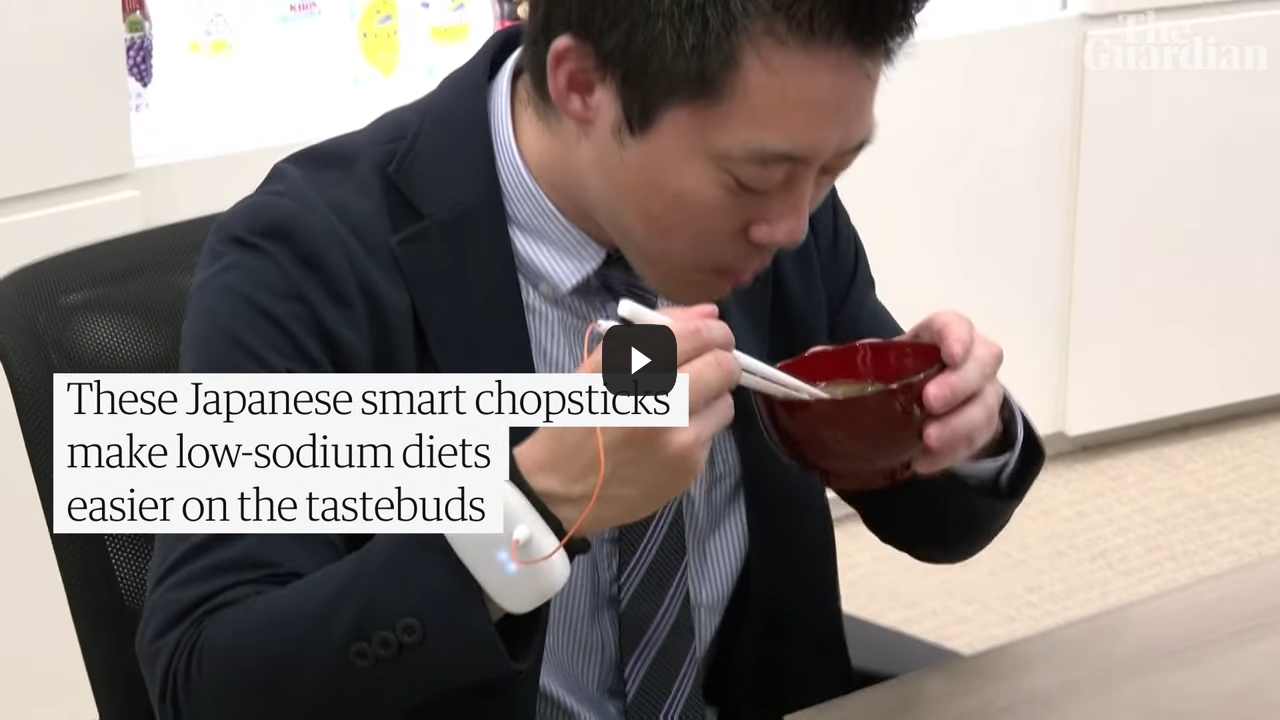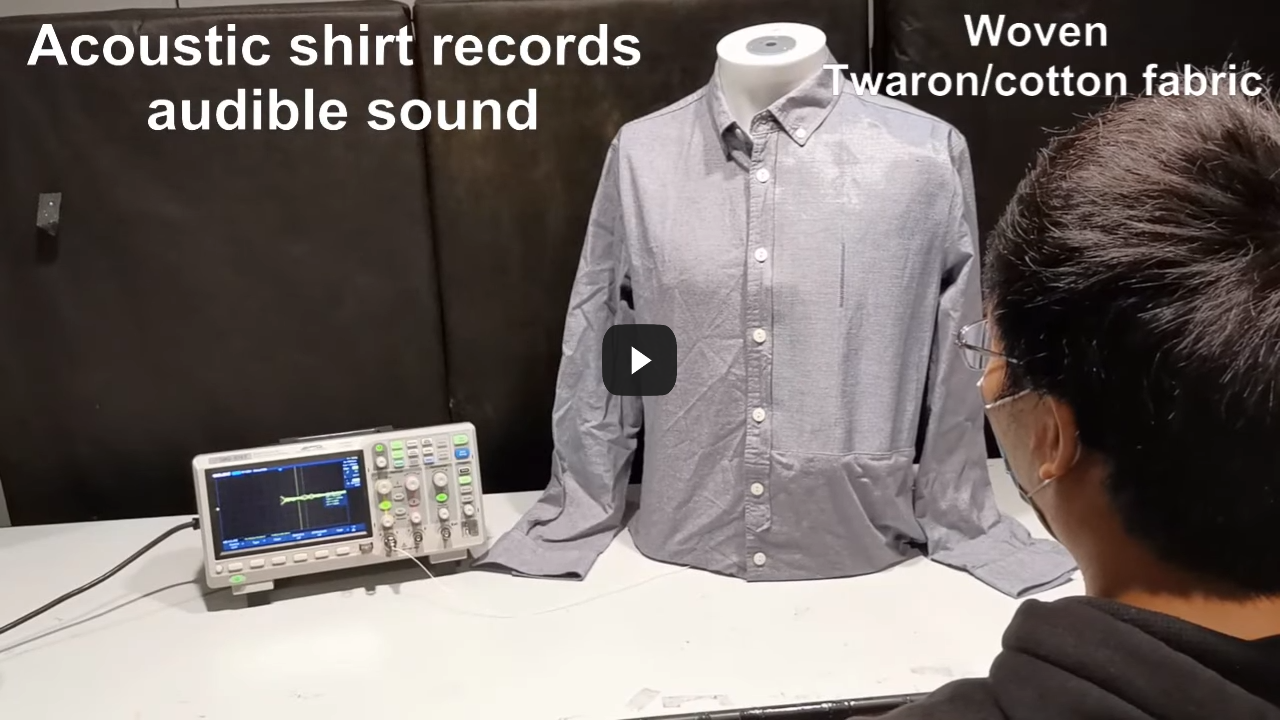Tech to Boost Our Senses

From smell to taste to sound, discover how scientists are developing technology to enhance our senses.
Clothes that can hear your heartbeat. An artificially intelligent electronic nose that can sniff out diseases. Chopsticks that make a dish taste saltier than it actually is. From Asia to Europe to North America, scientists and engineers are developing tech to heighten our senses!
Tasty tech: electric chopsticks
Miso soup, ramen, sushi, and soy sauce–Japanese cuisine is beloved around the world. Unfortunately, the traditional Japanese diet is high in salt, with the average Japanese adult consuming around 10 grams of salt a day–that’s double the amount recommended by the World Health Organization (WHO).
Collaborating with food and beverage company Kirin Holdings, researchers at Meiji University have invented electric chopsticks to amplify the saltiness of a dish.
The chopsticks come with a mini-computer worn on the wristband. The device uses an electric charge to transmit sodium ions from the food to your mouth, enhancing the salty taste.
To test their invention, the team had 36 volunteers taste food samples that contained regular and reduced amounts of salt. When eating with traditional chopsticks, the volunteers could tell the difference between the two samples. But when they used the electric chopsticks, the volunteers found both samples equally tasty.
According to a press release, the perceived saltiness of a low-sodium dish was “enhanced by a factor of 1.5 when the developed electrical stimulation waveform.” During the trials, participants who ate low-sodium miso soup with the electric chopsticks said they “felt an improvement in richness, sweetness, and overall tastiness.”
Excessive salt intake can lead to high blood pressure, heart disease, and strokes. With electric chopsticks, foodies can make healthier food choices without sacrificing taste.
“To prevent these diseases, we need to reduce the amount of salt we take,” said Kirin researcher Ai Sato. “If we try to avoid taking less salt in a conventional way, we would need to endure the pain of cutting our favorite food from our diet, or endure eating bland food.”
The nose knows: sniffing out diseases
Scottish nurse Joy Milne made headlines for her keen sense of smell, which helped her detect if a person had Parkinson’s disease (PD). Her incredible ability spurred researchers to study the smell of this sickness. In June 2020, researchers from several universities in Europe published a study identifying 10 chemical compounds that are elevated in people with Parkinson’s.
Taking this discovery a step further, a team from Zhejiang University in China has developed an artificial intelligent olfactory (AIO) system to diagnose Parkinson’s through smell. This electronic nose uses gaseous vapors emitted from the sebum samples of Parkinson’s disease patients and healthy control subjects. Using gas chromatography and a surface acoustic wave (SAW) sensor with embedded machine learning algorithms, the team separated, identified, and measured each chemical component of a sample mixture. The AIO system was able to predict Parkinson’s with 70.8% accuracy.
“We are trying to use AIO to screen early PD patients from healthy people, or even people with mild cognitive impairment,” Xing Chen, a co-author of the study and associate professor in the biomedical engineering department at Zhejiang University, told BioSpace. “Although the accuracy might not be as good as the markers from blood, the non-invasive way attracted a lot of researchers to deal with the issue.”
We’re all ears: clothing that can hear
Engineers at the Massachusetts Institute of Technology (MIT) and textile specialists from the Rhode Island School of Design (RSID) have designed a fabric that can hear sounds and broadcast them. A study on the team’s design was published last March in Nature.
The design is inspired by the human ear. Sound travels as slight pressure waves. When these waves reach our ears, a circular layer of fibers in our eardrum turns those pressure waves into mechanical vibrations. Our cochlea then converts the waves into electrical signals for our brain to process.
The team’s fabric contains cotton fibers and Twaron, which is a strong, heat-resistant synthetic fiber that is commonly used in protective clothing. Together, these threads can convert incoming sounds into vibrations. The fabric also contains a special fiber–a “piezoelectric” material that produces an electrical signal when bent or pressed. Those electrical signals can be transmitted to a device that can read and record the voltage. Acting like a microphone, the fiber can capture sounds in a range of decibels, from a quiet library to heavy traffic.
To test their creation, the team incorporated the fiber into a machine-washable fabric. The fibers were able to hear handclaps. “The fabric was able to detect the angle of the sound to within one degree at a distance of three meters away,” said Grace Noel, co-author of the study and a Ph.D. student in the Department of Chemical Engineering at MIT.
A single fiber stitched to a shirt’s inner lining over the chest region was even able to hear the wearer’s heartbeat. The fiber can also serve as a speaker. When connected to a power source, it can broadcast sounds.
Given these abilities, the team’s fabric could help monitor health conditions, diagnose diseases, and help the hearing-impaired.
“Wearing an acoustic garment, you might talk through it to answer phone calls and communicate with others,” said Wei Yan, lead author of the study and currently an assistant professor at Singapore’s Nanyang Technological University. “In addition, this fabric can imperceptibly interface with the human skin, enabling wearers to monitor their heart and respiratory condition in a comfortable, continuous, real-time, and long-term manner.”
As one of the Top 19 EMS companies in the world, IMI has over 40 years of experience in providing electronics manufacturing and technology solutions.
We are ready to support your business on a global scale.
Our proven technical expertise, worldwide reach, and vast experience in high-growth and emerging markets make us the ideal global manufacturing solutions partner.
Let's work together to build our future today.





